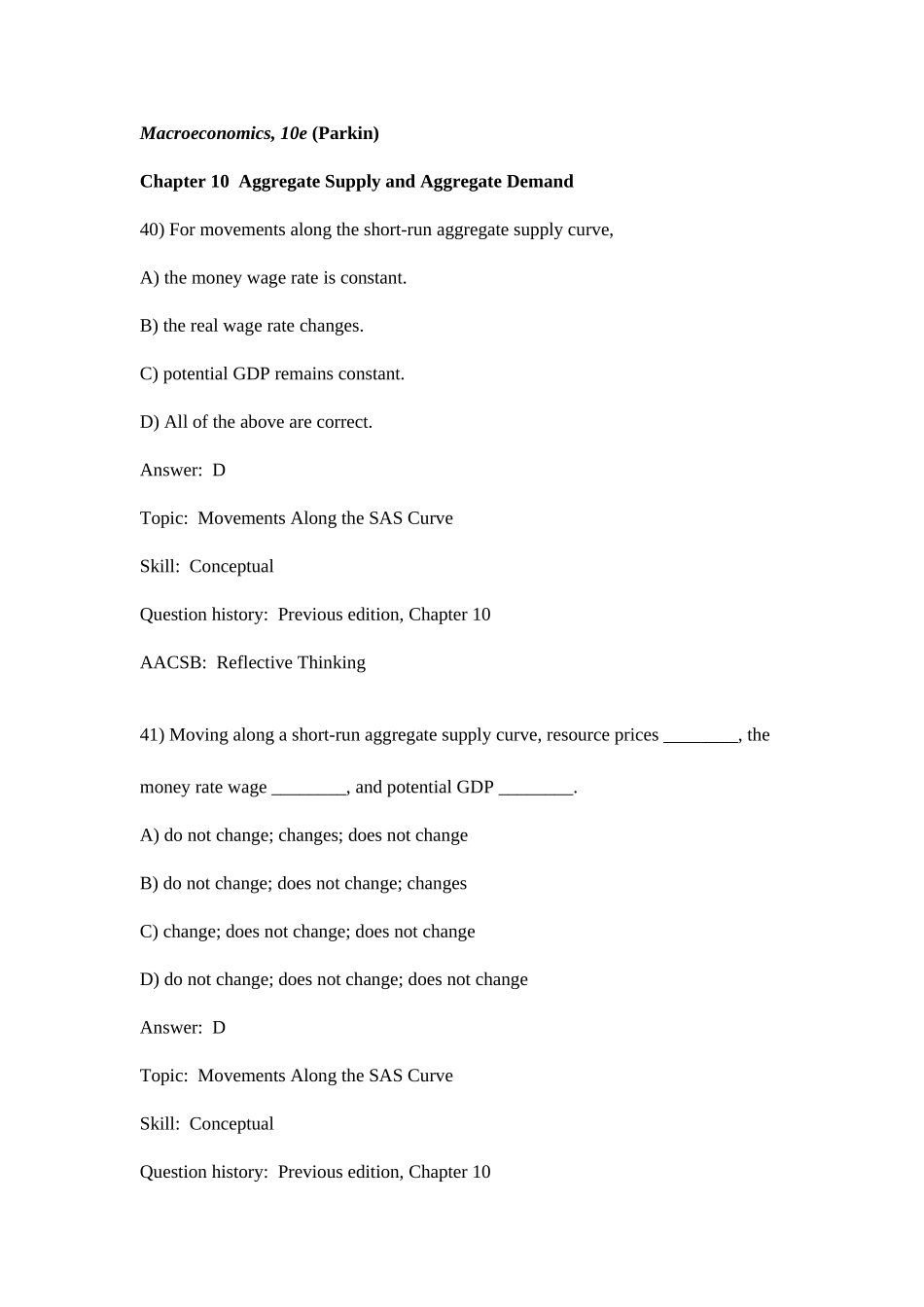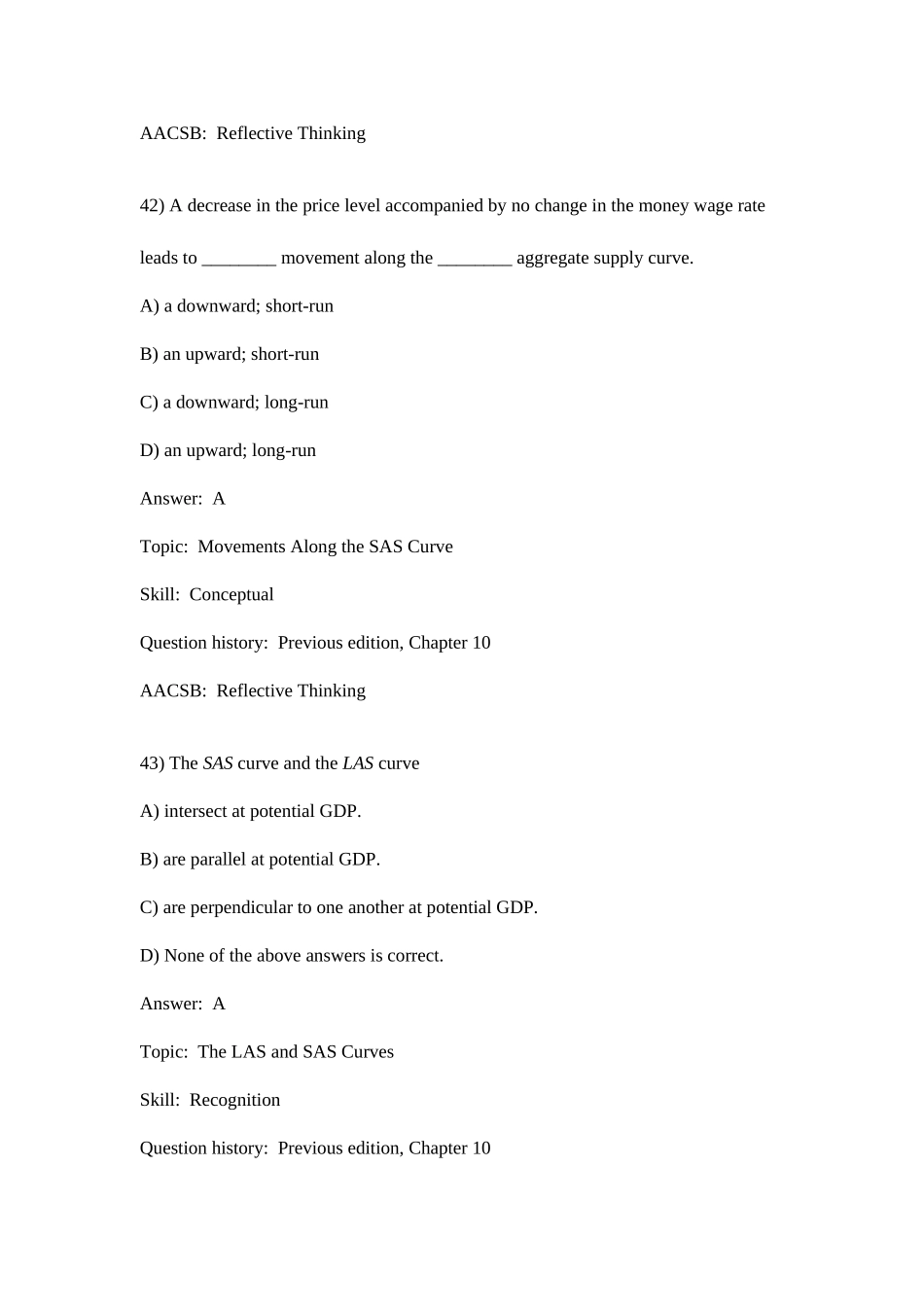Macroeconomics, 10e (Parkin)Chapter 10 Aggregate Supply and Aggregate Demand 40) For movements along the short-run aggregate supply curve,A) the money wage rate is constant.B) the real wage rate changes.C) potential GDP remains constant.D) All of the above are correct.Answer: DTopic: Movements Along the SAS CurveSkill: ConceptualQuestion history: Previous edition, Chapter 10AACSB: Reflective Thinking41) Moving along a short-run aggregate supply curve, resource prices ________, the money rate wage ________, and potential GDP ________.A) do not change; changes; does not changeB) do not change; does not change; changesC) change; does not change; does not changeD) do not change; does not change; does not changeAnswer: DTopic: Movements Along the SAS CurveSkill: ConceptualQuestion history: Previous edition, Chapter 10AACSB: Reflective Thinking42) A decrease in the price level accompanied by no change in the money wage rate leads to ________ movement along the ________ aggregate supply curve.A) a downward; short-run B) an upward; short-runC) a downward; long-runD) an upward; long-runAnswer: ATopic: Movements Along the SAS CurveSkill: ConceptualQuestion history: Previous edition, Chapter 10AACSB: Reflective Thinking43) The SAS curve and the LAS curveA) intersect at potential GDP.B) are parallel at potential GDP.C) are perpendicular to one another at potential GDP.D) None of the above answers is correct.Answer: ATopic: The LAS and SAS CurvesSkill: RecognitionQuestion history: Previous edition, Chapter 10AACSB: Reflective Thinking44) Suppose the price level, the money wage, and the price of all other resources rise by 10 percent. This set of changes leads toA) an upward movement along the LAS curve.B) a downward movement along t...


